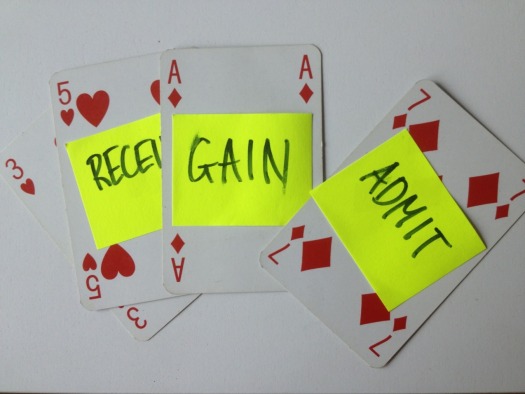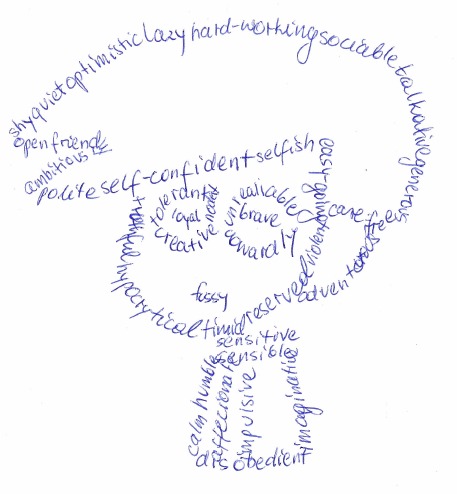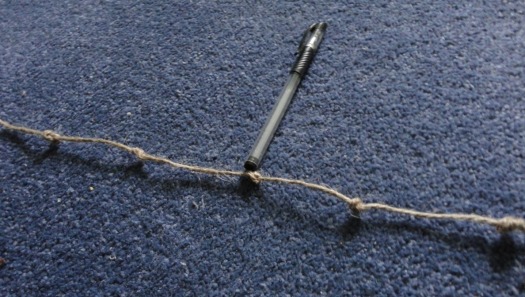Effective Vocabulary Revision
Weronika Sałandyk, Poland
Weronika Sałandyk has been teaching English for almost 15 years. She is also involved in teaching training: she conducts workshops for teachers of English, publishes articles and writes materials for OUP. Weronika loves taking part in teachers’ conferences. This passion started when she took part in her first IATEFL conference in Harrogate as the 2010 winner of IATEFL OISE Young Learners Scholarship. In the classroom she loves experimenting and surprising her students with new activities. She continually looks for solutions to combine fun with effective learning. E-mail: weronika.salandyk@gmail.com
Menu
Musical pen
Grab the word
You hear, you say
Murderer
Noughts and crosses
Shape words
Tug of war
Teaching vocabulary is our bread and butter. We introduce new words in nearly every lesson, only to find that they are forgotten in the next class. How to tackle the problem of students not remembering the words that appeared in previous lessons? How to make learners talk and use new lexical items at the same time? How to break the monotony of vocabulary exercises by adding movement, music, art and competitive spirit? This article presents a handful of vocabulary activities which will allow students to have some fun while practising the new vocabulary. Most of these activities can be used with any vocabulary set, any age group or at any level.
This is a quick and energetic warm-up which actively involves all the students. All you need to do is prepare a piece of lively music. Divide the class into groups of four or five. Tell each group they will need a pen and a blank piece of paper. Explain that you will play the music and students must pass the pen around their group. When the music stops the person holding the pen must write down the answer to a question you will ask. The questions might be different. You could say a definition of a word, give its synonym or antonym, read out a sentence with a gap, show a picture of an object, or reveal a picture flashcard fragment by fragment. You could also ask students to write five words that belong to the same topic, for example places in town. Once students know what word you are thinking of they have to write it down. Even though the whole group think about the answer only the person holding the pen can write it down. The team who first write down their answer shout STOP. Check and award points if the answer is correct.
Lyrics of songs usually provide a memorable context for new words. Some songs are perfect for revising a particular vocabulary set. For example, Lenka’s Everything At Once is great for practising similes. Once you have chosen a song, write some words from that song on small pieces of paper and add a few which don’t appear in the lyrics. Divide students into groups of four or five. Give each group a set of all the words, ask them to put them face up in front of the whole team. Explain that their task is to listen and grab the words when they hear them. They should do it as quickly as they can to be the first person in the team to collect that card. After hearing the song check who has collected the most cards in each team. Make sure that students haven’t taken any of the distractors which didn’t appear in the song at all. Students usually love this activity because it’s very energetic and engaging. They keep fighting to get the next word before their teammates do it. As a follow-up you can ask students to listen again and put all the words in the order they hear them. If you can’t find a suitable song you can use a short text from your coursebook where the words you want to recycle appear. Read out the text quickly and get students to grab the cards as they listen to you. Then, ask students to work in groups and recreate the text using all the words they have grabbed.
You hear, you say is a great settle-down activity. It’s also good for controlled practice of new material because you have a chance to hear each student say the lexical items you want to revise. To play the game you need to prepare a set of cards with words to practise. Each card must be divided into two parts:
| You hear:
GO
|
You say:
SWIM
|
| You hear:
SWIM
|
You say:
PLAY
|
The cards must be prepared in such a way that the word in YOU SAY section appears on another card in YOU HEAR section. The first card should include only YOU SAY section:
The word in YOU SAY section on the last card should have no equivalent in YOU HEAR section. Students can play individually or in pairs. Shuffle and deal the cards. Each student or pair should get about five cards. Students put the cards face up on their desks. Give them a minute to get familiar with their cards. Explain the rules: the object of the game is to get rid of all their cards. To do it students have to make a sentence with the word from the card. They know it’s their turn when they hear somebody say a sentence with the verb they have in the YOU HEAR section on one of their cards. The student with the first card (with only the YOU SAY section completed) starts the game. The person who has that word in the YOU HEAR section makes a sentence with the word which appears in the YOU SAY section on the same card. The game continues in this way until the last person makes a sentence and nobody reacts to that card. Cards which have been used should be turned over and put aside. With lower levels you can ask students to make sentences according to a given pattern. For example, the cards present body parts so students might say a sentence with ‘have got’: I have got two arms / one nose / two eyes.
This is one of my students’ favourite game. They can play it over and over again and never get bored. I also love it because it involves some thinking, careful listening, as well as speaking. Students are usually so involved in trying to solve the puzzle that they don’t even notice that they are using the new language. To play the game, prepare as many playing cards as there are students in the class. Attach a post-it note with a word to each card. Explain that cards 2-10 are innocent people. There are two special cards: the ace is the murderer, and the king is a detective.

Explain that last night someone was murdered and now they are all suspects. The card they get shows who they are but they mustn’t show it to anyone. Start the game by shuffling and dealing the cards. Everyone takes a quick peek at their card and lays it back on the desk face down. Only the detective reveals his/her card, sits in front of the class and starts the interrogation. S/he asks everyone, one by one, the same question for example: What did you do yesterday? Everyone needs to answer using the word from their card, for example for higher level groups gain or admit. Then the detective asks the same question once again. This time all the students repeat exactly (word after word) what they have said previously except the murderer who is a liar and changes a small detail in his/her testimony. For example his/her first answer was: I went to the shop and bought some apples, bananas and pears, then his/her second answer might be: I went to the shop and bought some apples, bananas and peaches. The task of the detective is to find out the identity of the murderer. The class can help if there are problems. This game can be used with various questions, for example What are you doing tomorrow?, What’s in the classroom? and so on. To make it more difficult, forbid the use of some frequently-repeated words such as go or play. Or challenge the students by making them say a sentence consisting of at least five words. If you have a large class choose ten students to be the suspects and label only the MURDERER card. The rest of the class will listen and act as detectives.
Students work in pairs. They get a noughts and crosses grid with nine pictures or words you want to revise. Alternatively, you may ask your students to prepare the grid with words from previous lessons.

Let’s say you want to revise the words for furniture: a shelf, a cupboard, a rug. Choose a story for your students to retell. It might be a well-known fairy tale (e.g. Little Red Riding Hood) or their own story (e.g. a scary story). Although the words in the grid have nothing to do with the story students have to incorporate them while retelling the events. Student A starts. To place his/her O or X on the noughts and crosses board Student A must use one of the words represented by a picture on the grid. For example, he/she might say Little Red Riding Hood was a girl who lived near the forest. In the morning she always took her favourite book from the shelf and read one page. Student B continues the story by using another word from the grid. The winner is the first person to get a row with O or X on the noughts and crosses board.
This activity usually requires some more time so it can be set as homework or used as a settle-down activity. Give everyone a blank white sheet stapled on top of a simple colouring page. Explain to your students that their task is to write the words you want to revise (e.g. from one category, for example character adjectives) following the black lines which they can see through the paper. Soon they will have a picture which is made of words instead of lines. As a follow-up students may use their picture to play some games like bingo.

Before you start, prepare all the things you will need: take a piece of string about one metre long and tie five knots. Prepare a pile of picture flashcards and a black sheet of paper to cover the picture. You may use the black paper to uncover the picture flashcard fragment by fragment or you may cut a hole in the middle and move it around the flashcard displaying various parts of the picture. Put the string on the desk or on the floor and place the pen next to the knot in the middle.

If your class is big and they can’t see the string, draw it on the board. Divide the class into two groups, assigning each group one side of the string with two knots. The pen divides the “field” into two halves and the object of each team is to try to get the whole line, gaining knot by knot, on their half. Explain that you will show them fragments of the flashcards and they must guess the picture. The team who say it first gain one knot of the string (you move the string, leaving the pen where it was to indicate the half of the field). The winner is the team who move all the knots on their side. As an alternative to showing pictures you can also give definitions of words.
Moir, N. (2009), Oxford basics for children. Starting and Ending Lessons, Oxford University Press: Oxford, UK.
Young, A. (2010), Not another gap-fill, a workshop at Bell Teacher Campus, Cambridge, UK.

Please check the Teaching English Through Multiple Intelligences course at Pilgrims website.
Please check the Methodology and Language for Primary Teachers course at Pilgrims website.
Please check the Methodology and Language for Secondary Teachers course at Pilgrims website.
Please check the Creative Methodology for the Classroom course at Pilgrims website.


|